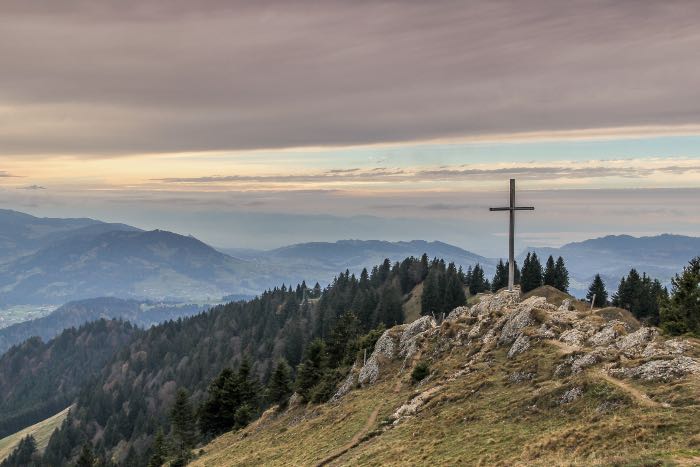
Driving the interstate, the ubiquity of crosses commemorating lost loved ones by the side of the road make them nearly invisible.
Quite the opposite with those big, gaudy crosses erected as monuments in small-town America. Those randomly placed in wooded clearings by the freeway or spiking mountaintop lookouts.
Most public crosses slide between these two extremes: innocuous to repulsive.
Then again, I’m not a huge fan of the cross image. Which certainly colors my impression.
A cross doesn’t fit in nature.
The beauty of the land inspires me. The cross doesn’t. Not there. Where it shouldn’t be.
Sometimes we might happen across one nature itself has made: a happy accident. These, of course, feel something closer to kismet.
I’m talking about the human-made kind. Made, placed, intending to be seen; intending to inspire.
Even when we expect to see them.
My recent retreat at Kanuga was wonderful. The grounds are serene and beautiful. The lake draws your attention, pulling your gaze to it. It is arresting, beautiful, still.
And yet, on the other side of that pristine lake, is a giant, white cross.
A symbol intending me to feel inspired by it, rather than by God’s creation. By what humanity has created. A symbol of what humanity has done to God. The assassin’s lynching tree.
Placed at the focal point across the lake.
This is nothing against Kanuga. Many church camps and religious institutions do this.
It was simply where I noticed it again. Awakened to just how strange it is to place a cross in nature. Not as a subtle reminder, but a blunt attention-stealer.
I do think too much.
That’s my deal.
But this is also a gut reaction. And one too often dismissed.
The Cross is political.
People who experience the cross, not as a symbol of hope in Christ, but as a symbol of the real hatred of humans, are rarely considered when we plaster them all over the place.
And as the final death of Christendom’s dominance brings us an increasingly post-Christian United States, the idea that a cross can be, at once, a deeply inspiring symbol and also somehow innocent is revealed as a lie most of us willingly tell ourselves.
The cross is always political. From its roots as a middle-finger to empire to the shield empire used to bash in people’s heads, it has never been innocent. It’s power too great for the trivial symbology with which we still treat it.
The Cross overwhelms its surroundings.
Which is why people like to put it on mountaintops and by the freeway. They want to advertise for Team Jesus. You can’t not see it when we make it 20 feet high and put it right in our line of sight.
Which demonstrates the two deep powers inherent to the cross:
- God’s power in the resurrection
- Humanity’s power to oppress
Even as people used the power to oppress, they attempted to whitewash it in God’s power. But they could never see that as resurrecting, of course. How could they? Manifest Destiny, slavery, and imperialism existed as a false third option: as God’s power to oppress through humanity. Which really always seemed like the justification it was.
God’s power in the resurrection, would be seen as bold if it had happened in front of the whole world. Instead, the resurrection happened at night, inside the tomb, without fanfare.
God’s power is found, discovered, sensed. It is subtle. We see it in leaves drenched in dew, the sun cresting over treetops, and fog rolling across the lake. We see God in small things and crazy things.
I found peace and inspiration from everything I experienced in nature. People didn’t have to but in to make me feel things.
